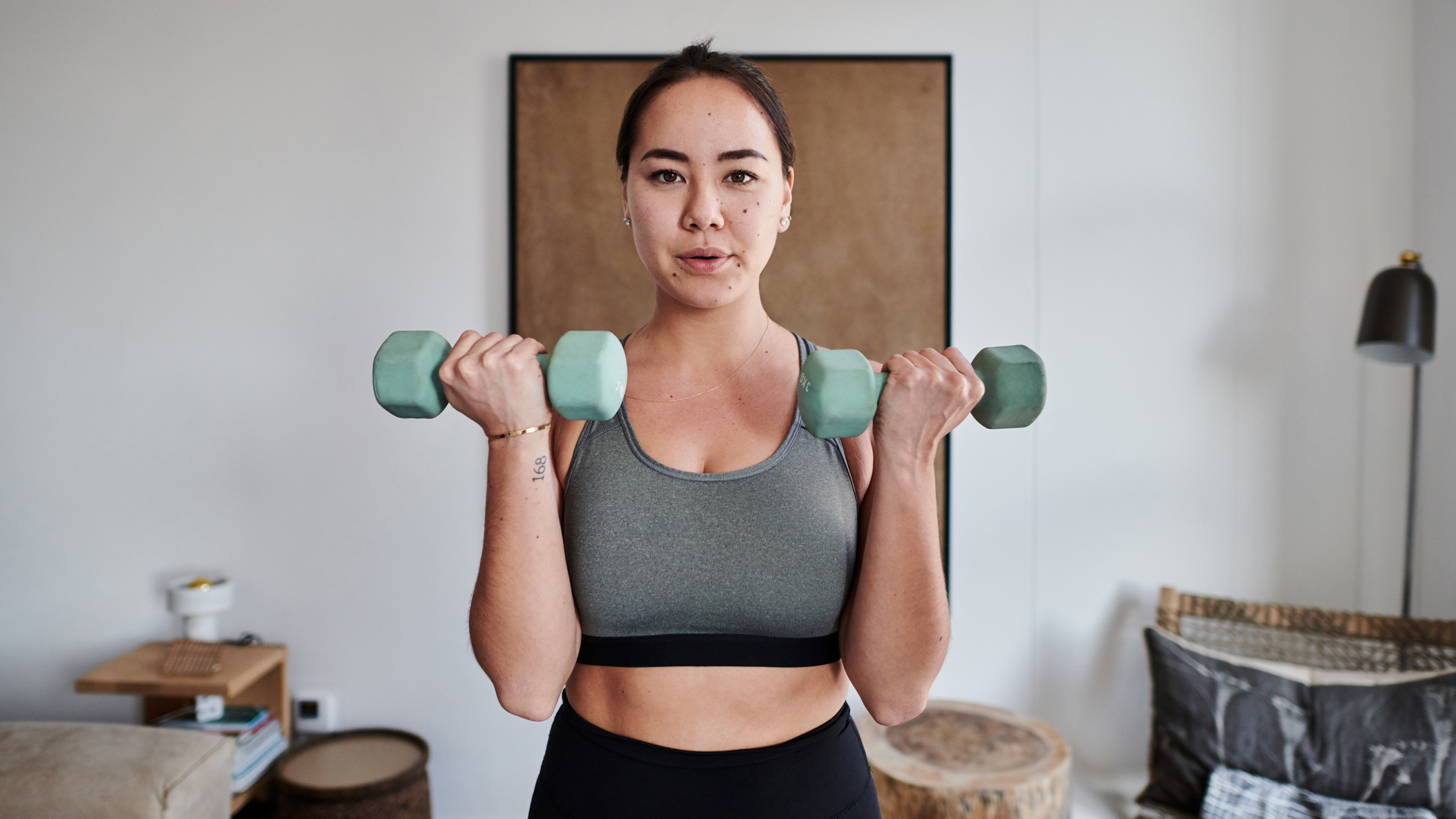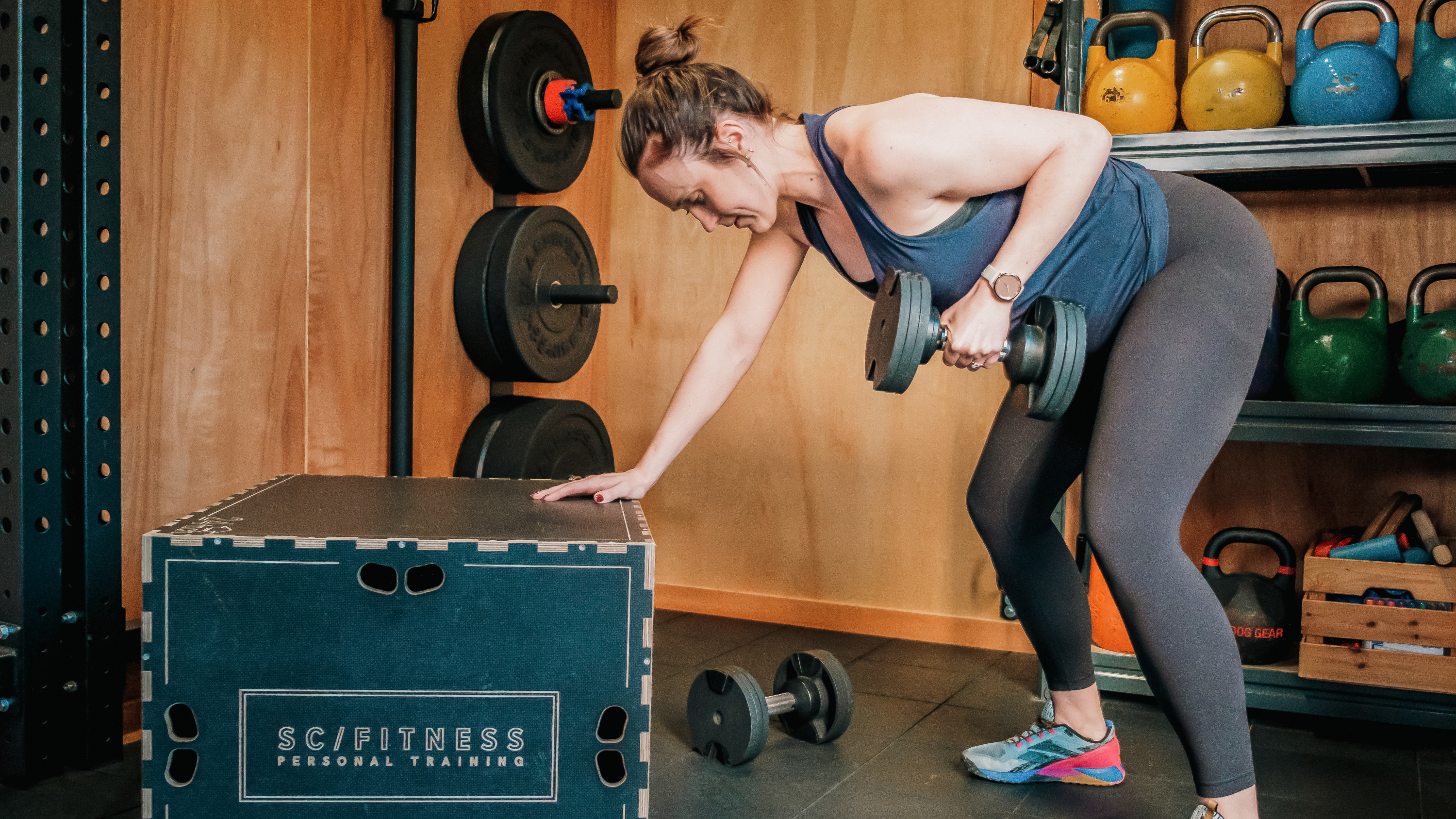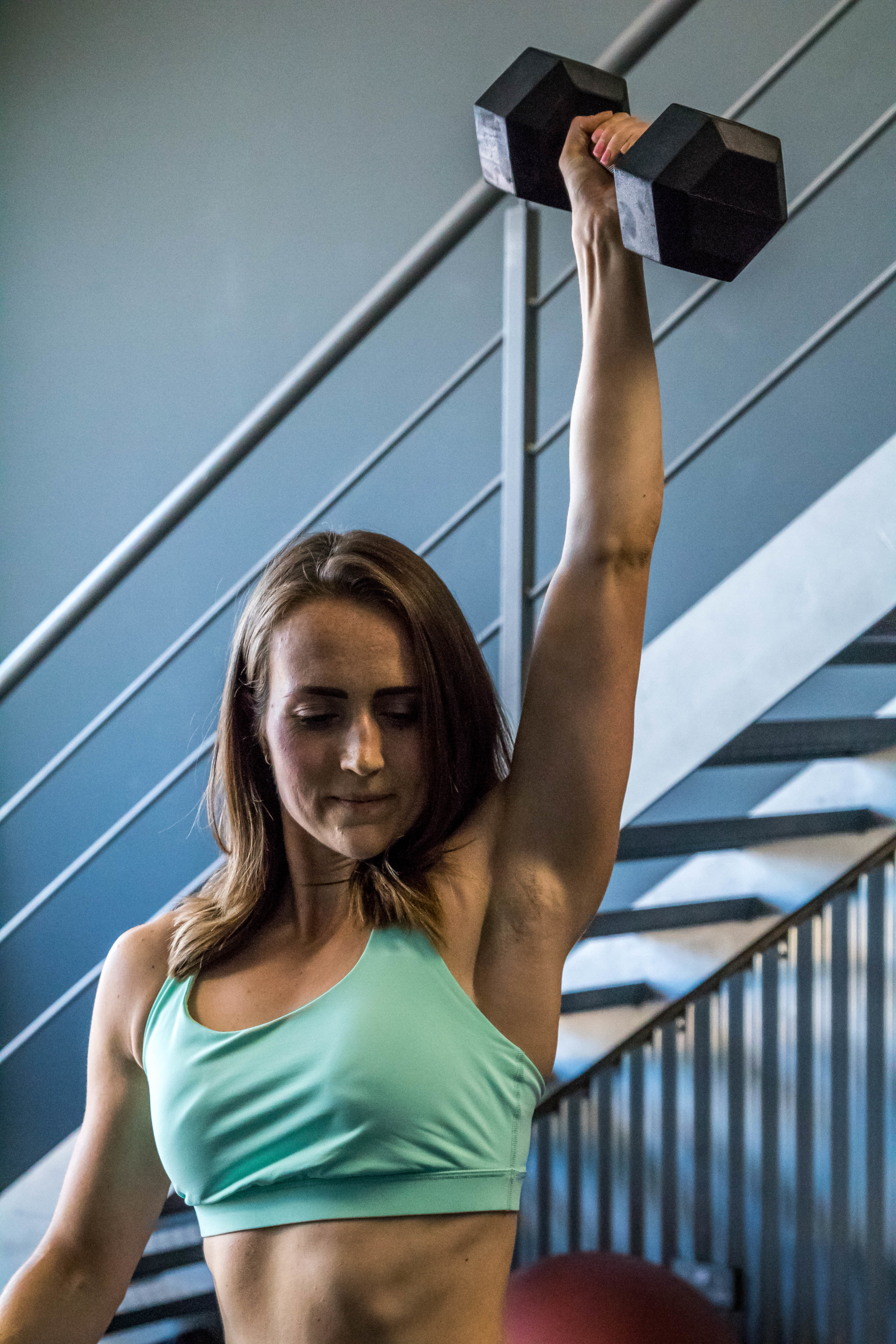This Upper-Body Workout Is Ideal For Women Looking To Get Strong
Strengthen your chest, back, shoulders and arms with just a pair of dumbbells

The benefits of strength training for women are profound. Beyond the obvious improvements in functional strength for everyday activities, regular resistance training can also help resist osteoporosis, improve mobility, flexibility and posture, and reverse the signs of aging. Genuinely.
“As we age we naturally lose muscle, therefore ensuring we stimulate muscle tissue regularly is of utmost importance in order to counteract this,” says personal trainer Sian Childs, who specializes in training women.
“Strength training also has a huge benefit in terms of pain management and recovery when carried out safely during pregnancy, postnatally and also during the menopause,” she adds.
Getting started is straightforward too, and to help Childs has devised a six-move upper-body workout that only requires a pair of dumbbells and a sturdy platform—a weights bench if you’re in the gym, or a sturdy chair if you’re at home. No dumbbells? No problem, you’ll find plenty of workouts for women, from PTs who work extensively with women, in our women’s fitness section.
How To Do This Upper-Body Workout For Women
This upper-body workout for women is built around three supersets, which require you to perform each pair of exercises back-to-back with no break in between. After each superset, rest for 60 seconds, then return to exercise A and repeat until you’ve completed each superset three times in total. Then move on to the next superset.
You'll notice there are also rep ranges for each exercise. Childs suggests choosing a weight that makes completing the lowest number of reps manageable, but still challenging.
“If you complete eight reps of each exercise the first time you complete this workout, aim for sets of nine or 10 the next time you tackle it,” says Childs. “When you repeat it for a third time, try increasing the weights you use for each set, aiming for eight reps and so on.”
Get the Coach Newsletter
Sign up for workout ideas, training advice, reviews of the latest gear and more.
This bit-by-bit approach, known as progressive overload, is the secret sauce for increasing muscle size and strength. Repeat the workout regularly and you’ll see results fast.
If all you have is one pair of dumbbells that feels a little too light for some of the moves, such as the row, slow down the movement to keep your muscles under tension for longer.
Likewise, if your weights are too heavy for any exercise, such as the lateral raises, go for partial reps instead, where you only lift the weight for half or a quarter of the given rep range. It will still put your muscles under tension and encourage them to adapt and grow.
Upper-Body Workout For Women Overview
- 1A Push-up: 3 x 8-10
- 1B Single-arm row: 3 x 8-10
- 2A Single-arm overhead press: 3 x 8-10 each side
- 2B Bench dip: 3 x 10-12
- 3A Biceps curl: 3 x 10-12
- 3B Lateral raise: 3 x 12-15
Upper-Body Workout For Women Form Guides
1A Push-up
Sets 3 Reps 8-10 Rest 0sec
Target muscles Chest and triceps
Get onto your hands and the balls of your feet with your arms extended and hands underneath your shoulders, your core engaged and your body in a straight line from your shoulders to ankles. Bend your elbows and lower your chest as low as you can, then push up to the start position. If performing this move on your knees, ensure your shoulders, hips and knees are in alignment.
1B Single-arm row

Sets 3 Reps 8-10 each side Rest 60sec
Target muscles Upper back and biceps
Stand with your feet shoulder-width apart facing a weight bench or sturdy chair, holding one dumbbell in your right hand. With a slight bend in your knees, hinge forward at your hips and place your left hand on the bench, letting your right arm hang down. Your torso should be close to parallel with the floor. Retract your shoulder blade on your right side to engage your upper back muscles, then lift the dumbbell toward your right hip, pause, then lower under control. Do all your reps on one side, then switch sides.
2A Single-arm overhead press

Sets 3 Reps 8-10 each side Rest 0sec
Target muscles Shoulders
Stand with your feet shoulder-width apart, holding one dumbbell at shoulder height with your palm facing you and the other arm outstretched to the side for balance. Engage your core and extend your arm to lift the weight straight up. Lower under control and repeat on all sides before switching arms.
The version outlined above is a strict form dumbbell shoulder press. If you find the weight a bit heavy, you can use your legs to help get the weight up. Bend your knees slightly, then straighten your legs as you press the dumbbell overhead—the extra momentum will help. Just slow down the lowering part of the movement to develop shoulder muscles.
2B Bench dip
Sets 3 Reps 10-12 Rest 60sec
Target muscles Chest and triceps
Sit on the edge of a bench or chair, with your legs extended in front of you and your heels resting on the floor. Place the palms of your hands on the edge of the bench and shuffle your butt off the chair, then bend your elbows to lower. Pause once your elbows are bent to 90°, then extend your arms to return to the start position. Keep looking forward throughout.
3A Biceps curl
Sets 3 Reps 10-12 Rest 0sec
Target muscles Biceps
Stand with your feet hip-width apart, holding dumbbells with your palms facing forward, elbows tucked in to your body. Brace your core and bend your elbows to lift the dumbbells to your shoulders. Squeeze your biceps hard, then lower under control. If fatigue sets in, alternate arms with each rep to make it slightly easier.
3B Lateral raise
Sets 3 Reps 12-15 Rest 60sec
Target muscles Shoulders
Stand with your feet hip-width apart, holding dumbbells by your sides with your palms facing and a slight bend in your elbows. Engage your core and squeeze your glutes to provide a strong base, then raise your arms out to the sides, stopping when your arms are parallel with the floor. Lower the dumbbells slowly.
If you only have one pair of weights and they are too heavy for you to complete the movement, perform partial reps instead. From the start position, raise the weights up halfway or a quarter of the way to engage your deltoid muscles, then return them to the start position slowly and repeat. Aim to keep the muscles under tension as long as you can bear.
See more great options with our guide to the best dumbbells.

Alice Porter is a journalist who covers health, fitness and wellbeing, among other topics, for titles including Stylist, Fit & Well, Glamour, Cosmopolitan, Grazia, VICE and Refinery29. When she’s not writing about these topics, you can probably find her at her local CrossFit box.









